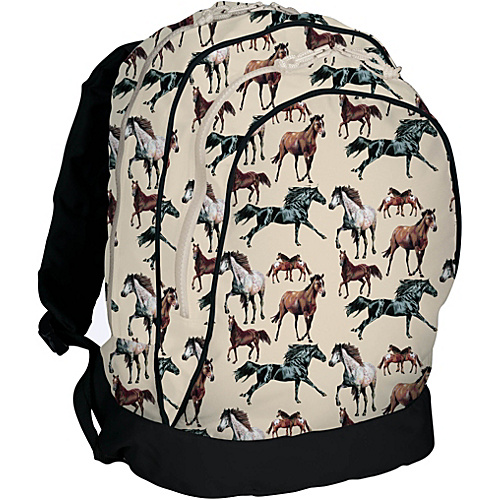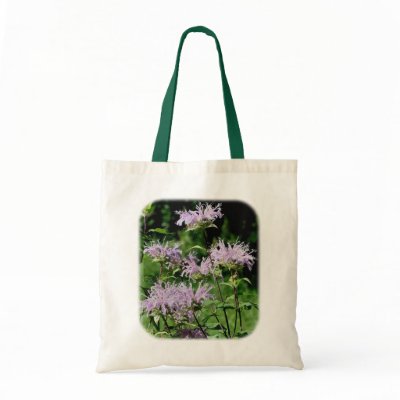Getting children outdoors has value. Last week, I discussed the difference between structured (adults guiding children in activities) and unstructured (children making up play as they go) play. I also shared some ideas to try with children. This week, I will share some structured activity ideas to try with children: nature bags and sensory activities.
Nature bags are tools that children can use when exploring outside. They consist of a bag and contents that will aid them in their exploration to encourage creativity, imaginative play, emotional connection to nature, physical activity and intellectual learning. We keep ours in the closet next to our coats and take them with us whenever we head outside as a family. See the list below to get you started in creating your own nature bag.




Possible Contents. Included in this list are items that will help children look at things closely, measure, identify, collect, pick apart, view without touching, make rubbings of, draw or record. This is just to get you started. Feel free to add to the list as you learn what you need in your adventures. Keep in mind, however, that the bags should be light for little children to carry.
- Magnifying glass
- Field guide(s)
- Ruler
- Bandana
- Mini clipoard
- Metal probe and Tweezers (to pick apart objects)
- Container with lid or Plastic bags
- Peeled crayons
- Pencil or Pen
- Nature journal
Preventing Fears. Sometimes children may have fears about being outside (adults, too!). It is important to address these fears and empower others with strategies to face their fears (i.e. If a child is fearful of bugs, they can carry the bug spray for the group. If the fear is getting hurt, they carry the band aids.). Then, the child can help if a strategy is needed. Here are some ideas of things that may be helpful tools to include in nature bags to face fears. However, they are good to have along in your bag even if the kids don’t have related fears.
- First aid kit (injury)
- Flashlight (darkness)
- Whistle, map and compass (getting lost)
- Toilet paper (bathroom)
- Bug spray (bugs)
- Water bottle (thirst)
- Snacks (hunger)
- Sunscreen (sunburn)
- Sun hat or sunglasses (sun in eyes)
- Warm layer and extra clothes (too cold or wet)
- Rain coat and boots (weather)
We as people use the five senses (sight, smell, taste, touch and hearing) each day of our lives. Below are some ideas to do on a hike with children that involve using their senses. There is one activity for each sensory area. Animals also use their senses to survive. See if children can come up with an animal that uses a sense and what it helps them do in nature. After trying these, see if you can come up with some of your own activities together.
Sight. Gather 3-10 items from the surrounding area and place on ground. Examples might include a pinecone, wildflower, leaf, stick, etc. Cover them with a bandana. Tell children that they have 30 seconds to memorize the items. Uncover the items, count to 30 and cover them again. Then, allow children to go hunt for the items and bring them back. Share what they find and celebrate which ones they remembered using their sight.
Smell. Gather 4-6 film canisters with lids. Dip cotton balls in different scents (peppermint mouthwash, cinnamon, coffee, buttered popcorn, peanut butter, garlic powder, essential oils like orange or rose, etc.) and put inside the canister. Using a bandana, cover the eyes of the children. Then, hold the opened container under their nose. Tell them to take a deep breath, smelling through their nose. See if they can guess what scent is in each canister.
Taste. Place four items in a brown paper lunch bag or sack from home. The items should cover the different tastes (sweet, sour, salty and bitter). Examples might include a piece of chocolate, sour gummy worm, pretzel stick and lemon wedge. Using a bandana, cover the eyes of the children. Then, have them each grab one item from the bag and stick it into their mouth. See if they can taste if it is sweet, sour, salty or bitter and if they can identify the item without looking. It is always a good idea to choose items that your child is comfortable with or enjoys.
Sound. Gather 4-10 film canisters with lids. Pair containers so that each container will have one item inside that matches the item in a second container. Examples might include two containers with a paperclip inside, two with popcorn kernels, two with sand, two with ripped up tissue, two with coins, etc. Secure the lids on the containers and give them a shake. Each set has a unique sound. Then, pass the containers out to children. Have them shake their container and listen to the sound it makes. Their job is to find their partner in the group by shaking their canisters and using their listening skills. Their partner has a shaker that sounds just like theirs.
Time to give some of these ideas a try. Don’t feel like to you need to do all of them. One or two might be a good stretch for youngsters. Share your experiences with us in the comment section below. What have you done with children in the outdoors that was successful?
Some of the sensory activity ideas listed came from the book Small Wonders.

